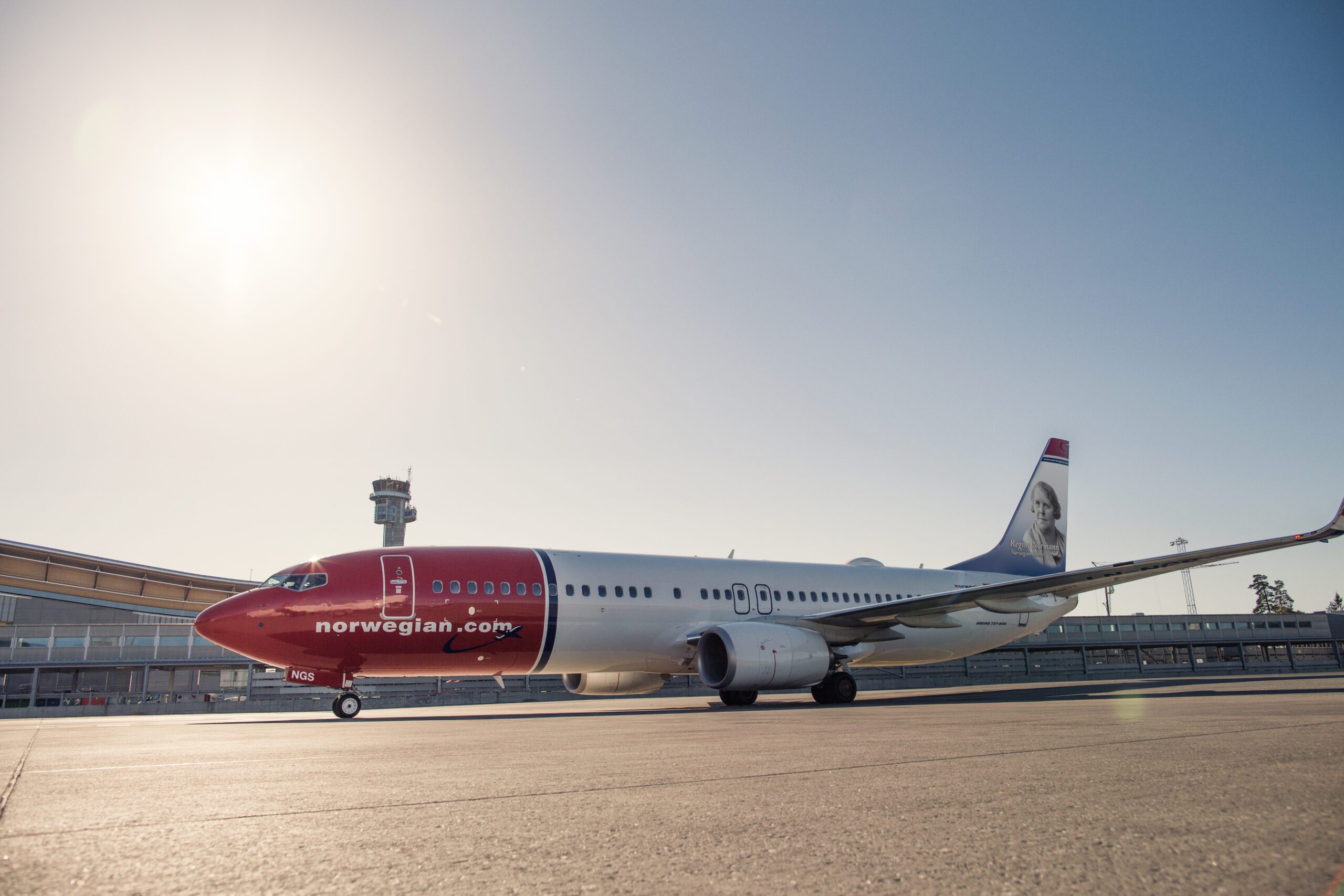
55 Tail Heroes 001 UPDATED 1 scaled
Despite reporting a NOK-992.8 million net loss, Norwegian Air is actually quite pleased with how it weathered the first quarter of 2023. While the operating loss was higher than in Q1 2022, the airline demonstrated that it is no far more robust than before its restructuring a couple of years ago. The outlook for this summer is very good. Norwegian pleased with the outcome of Q1.
Norwegian reduced its winter capacity by twenty to thirty percent to reduce unnecessary costs. It carried 3.8 million passengers, who generated NOK 3.975 billion in total operating revenues compared to NOK 1.916 billion the year before. Transport revenues were NOK 3.191 billion (2022: NOK 1.513 billion), and ancillary revenues were NOK 604 million (NOK 345 million). The load factor was 80.9 percent. Cash flow was NOK 869 million.
The airline is also seeing a steady return of corporate customers, with bookings up six percent over 2019 despite operating at a lower capacity.
Expenses were up to NOK 4.130 billion from NOK 2.221 billion. Fuel costs increased by 143 percent to NOK 1.539 billion, while there was also an impact from the high US dollar. A reclassification of heavy maintenance costs for leased aircraft resulted in NOK 158 million in cost versus NOK 110 million last year. In all, the operating loss (EBIT) was NOK-916 million, up from NOK-849 million year on year. The NOK -992.8 million net loss compares to NOK-1.034 billion.
Busy summer ahead
Still, CEO Geir Karlsen is happy with the outcome of Q1: “This quarter is a strong demonstration of our ability to adjust capacity to seasonal fluctuations in demand and to prepare well for the busy summer travel season ahead.”
Because that’s what Norwegian is expecting, a busy summer. Booked fares for June to August are 25 percent up on last year, although bookings are still below 2019 levels. “Current booking trends remain highly encouraging, and the company is expecting to record one of the strongest summer seasons in its history. For the full year of 2023, the company is forecasting a significant increase in unit revenue from last year,” the airline says in its earnings report.
What makes its position different is that Norwegian now has a solid buffer. Cash and cash equivalents stood at NOK 8.6 billion by the end of March, up NOK 1.1 billion year on year. Net debt was higher, however, to NOK 4.1 billion from NOK 2.1 billion the year before, as nine leased Boeing MAX 8s joined the fleet and were recognized on the balance sheet.
No aircraft shortage
Compared to many other airlines, Norwegian has no aircraft capacity problems and has no need to wet-lease extra aircraft. The airline recently inducted eleven Boeing MAX 8s, of which six are former Flyr aircraft from Air Lease Corporation that became available after the fellow-Norwegian carrier went out of business earlier this year.
Norwegian will grow the fleet from 72 Boeing 737-800NG and MAX 8s to 81 this summer when it plans to operate a network with 300 routes. The airline has limited pre-delivery payments this year and in 2024 for the fifty MAX 8s it has on direct order with Boeing. Financing for ten aircraft has been secured.
Full-year capacity should grow by nineteen percent year on year to 32 billion available seat kilometers, which should help to improve unit revenues. The airline is hedged forty percent on fuel throughout the year.
Views: 0



